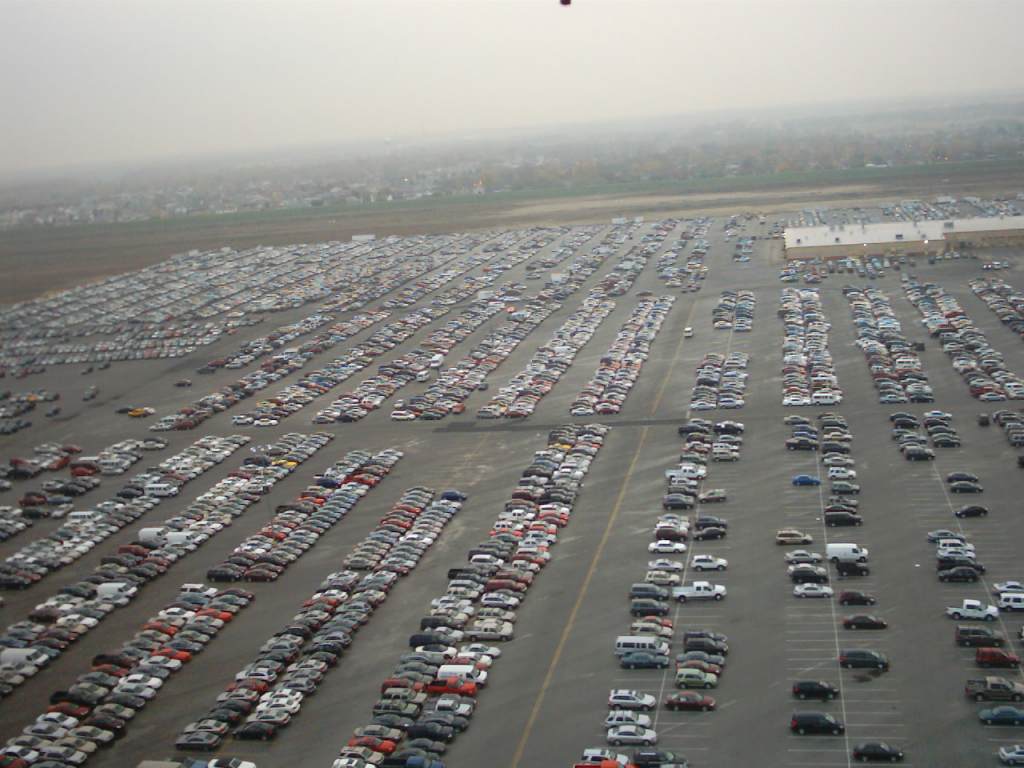IN S-P-R-A-W-L CITIES, THE ANSWER IS NO..!
[stextbox id=’black’]“The gigantism of the car landscape and the consequent urban sprawl are the main obstacles to sustainability.” Paolo Soleri


It has always been crystal clear to me – but apparently not to the eco-lobby – that “saving the planet” would be much simpler if that object of our affection, which even lycra-clad cycling enthusiasts assume would be impossible to live without, could be dispensed with. What could be more illogical, and more damaging to the environment, than (in the UK alone)..
>33 MILLION over-sized and over-powered, but critically UNDER-USED, passenger cars – each typically occupied by just ONE PERSON and used (actually driven) for just ONE HOUR per day or less..!
It seems very strange that such a scandalously wasteful, enormously inefficient, and alarmingly DANGEROUS (especially to wildlife and our beloved pets) personal transportation concept is almost never fingered as the root cause behind most of the eco-dilemmas that we constantly agonise over. Since economists constantly parrot the mantra “our economies could not survive without them..!”, one might expect visiting aliens to assume our cars to be sacred icons of twin deities – “JOBS” and “THE ECONOMY”.
Instead of tackling the ROOT CAUSE of our enviro woes – cities built around car dependency – the UK govt (along with many others) have legislated an insane plan to scrap 33 million ICEV’s and replace them with 33 million EV’s, each loaded with 400-500 kilos of toxic batteries which last maybe 10 years before they also have to be scrapped..! Aside from the enormous waste and pollution, a world of EV’s will require a doubling of electricity generation..!


Fun Fact – The average UK car is driven for just 20 miles a day (about 1 hr per day) – most of which is taken up by commuting, school run, shopping, and assorted mundane errands, etc.
5% of the time it is being used, the other 95% of the time it is sitting idle..!
A QUESTION FOR CAR OWNERS….
Q. As a % of all your driving hours, how much of your driving is pleasure trips..?
I haven’t been able to find any figures but, if I were to stab a guess, “pleasure usage” as a proportion of all usage probably hovers between 5 and 10% – and the latter figure is surely an over-estimate.
Mr Average Car, like most of his mates, spends 95% of his life “resting”..! Of the other 5%, 90% of that is occupied with “mundane” jobs, leaving just 10% for what he was originally designed for, i.e., “pleasure trips”. So Mr A. Car only does what he is best at doing for just 6 minutes a day, or only 0.5% of his life..!
The point is simple. If you were fortunate enough to live in a place where you could easily and conveniently walk to work, school, shops, etc., the ONLY REASON you might want a car would be for those occasional pleasure trips. In that case the common-sense thing to do would be to RENT A CAR as and when you need one..! Even better, belong to a CAR-SHARING group..!

THE SYMBIOTIC LINK BETWEEN SPRAWL & CARS –
EACH FEEDS OFF THE OTHER
ELIMINATE CARS TO ELIMINATE SPRAWL
ELIMINATE SPRAWL TO ELIMINATE CARS
Cities are built around cars, thus enabling residents to live in widely-dispersed low-density suburbs often far from where they work, shop, school, and play. Instead of addressing the ROOT CAUSE of the multitude of problems caused by mega-millions of private vehicles, we keep adding to the problem by continually expanding and “improving” the already convoluted road and services infrastructure in order to accommodate ever more..!

